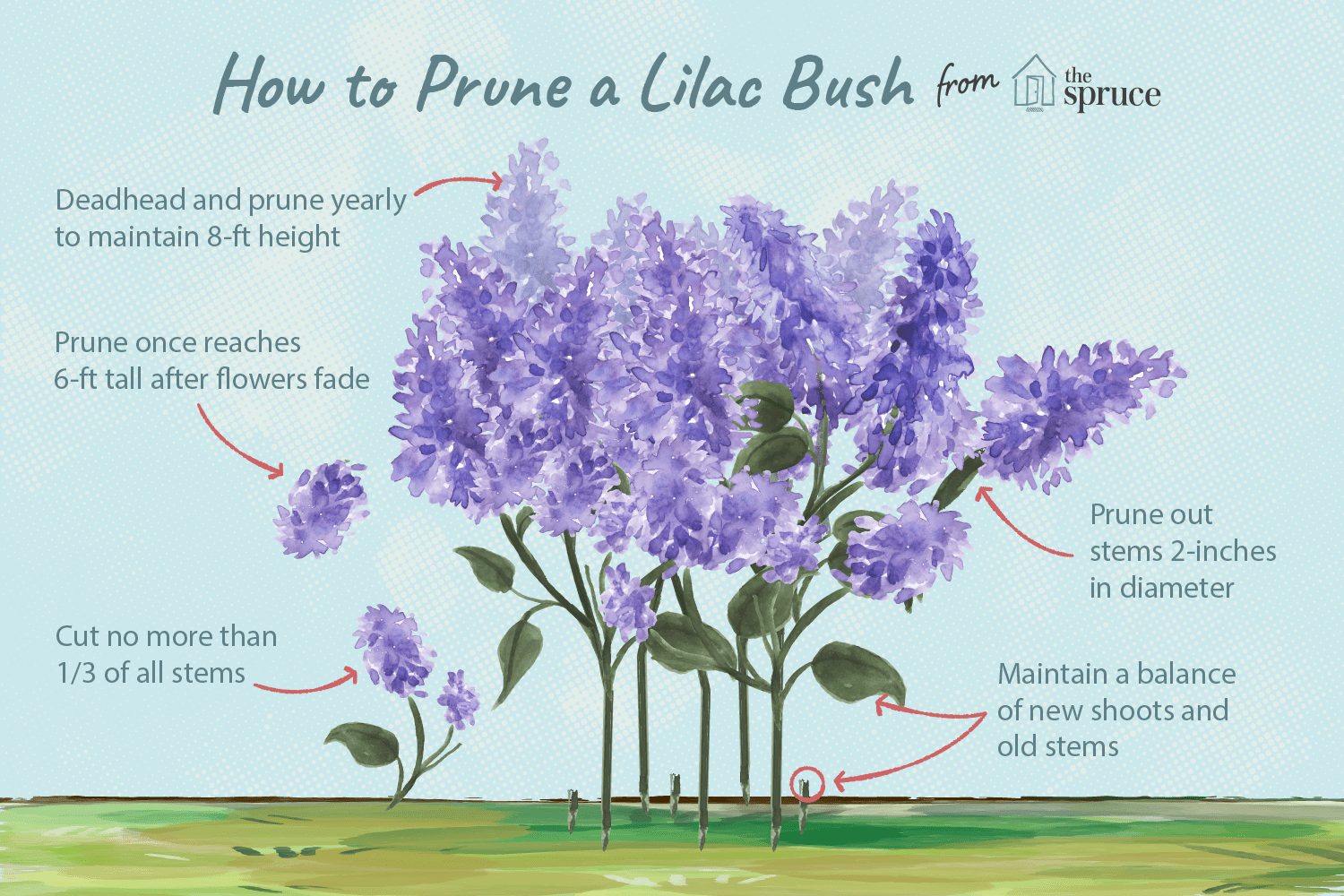Knowing how to trim lilac bushes keeps them vibrant and neat. After the first five years, a lilac bush needs to be pruned every year to keep its shape and the right amount of new flowering shoots and older stems. A fully grown lilac bush is usually between 8 and 15 feet tall. If it has thick stems and few flowers, it may need a lot of “rejuvenation” pruning. Heres what you need to know about how to prune a lilac bush.
Lilacs are classic spring-blooming shrubs loved for their beautifully fragrant flowers that come in shades of purple pink white and more. To keep lilac bushes healthy and promote prolific flowering year after year, occasional pruning is needed. Proper pruning improves shape, removes dead wood and encourages new growth.
Read on for a complete step-by-step guide to pruning lilac bushes With the right technique and timing, you can easily prune your lilacs for maximum floral displays.
When is the Best Time to Prune Lilac Bushes?
For most lilac varieties, the optimal pruning time is right after flowering ends in spring. This is typically late April through early June depending on your climate.
Pruning immediately after blooming allows time for the shrub to develop strong, flowering wood before winter dormancy. It also avoids accidentally removing next year’s flower buds, which form shortly after blooming finishes.
Rejuvenation pruning of overgrown, thick-stemmed lilacs can be done in early spring before new growth emerges.
Pruning late in the growing season is not recommended as it can reduce flowering and increase winter damage susceptibility.
Gather Needed Pruning Tools
Having the right pruners makes pruning tasks much easier. For lilac bushes, gather these essential tools:
- Bypass hand pruners – For smaller stems up to 1/2 inch diameter
- Bypass loppers – For thicker stems from 1/2 to 1 1/2 inches diameter
- Pruning saw – For lilac stems over 1 1/2 inches thick
- Extendable pruners or pole pruner – To reach top branches
- Disinfectant – For cleaning tools between plants
Also have garden gloves, safety goggles and a first aid kit on hand. A stepladder may be needed to reach upper branches.
How to Prune an Overgrown Lilac Bush
Old, overgrown lilacs with thick woody stems and minimal blooms require rejuvenation pruning. There are two approaches:
1. Gradual Three-Year Method
-
Year 1 – Remove 1/3 of the oldest, thickest stems at ground level in early spring.
-
Year 2 – Prune out another 1/3 of the oldest remaining stems to the ground.
-
Year 3 – Cut down final 1/3 of oldest stems to rejuvenate. Resume normal pruning.
2. Drastic Single-Season Method
- Cut all stems down to 6-12 inches above ground in early spring.
- Fertilize to encourage vigorous regrowth.
- Prune lightly the following year to shape as needed.
With either approach, the goal is to force the generation of new young stems that will flower profusely.
How to Perform Regular Maintenance Pruning
For established, regularly pruned lilac bushes:
-
Remove dead, damaged and crossing/rubbing branches anytime.
-
Cut out thin, twiggy growth and weak shoots.
-
Annually prune out 1/3 of the oldest, thickest stems down to the ground.
-
Trim remaining stems just above outward facing buds.
-
Remove stems thicker than 2 inches diameter to control height.
-
Establish an open form with 8-12 evenly spaced main stems.
Proper thinning improves air circulation and light penetration for healthy growth. The shrub should maintain a rounded shape without shearing into balls or boxes.
How to Prune a Lilac Tree
Lilac shrubs can be pruned into small ornamental trees. To maintain their form:
-
Establish an open vase shape with several main branches.
-
Annually prune to remove inward growing crossing branches.
-
Keep the center open by thinning congested branching.
Let the ends of branches grow longer while pruning inner portions. Occasionally head back extra-long laterals to encourage dense branching.
When to Deadhead Lilac Flowers
Deadheading spent blooms redirects energy to forming next year’s flower buds. To deadhead lilacs:
-
Snip off flower clusters right below the faded blossoms after flowering ends.
-
Use bypass pruners for easier, cleaner cuts than finger pinching.
-
Remove developing seed pods regularly to prolong blooming.
For the tidiest look, deadhead flowers before seed pods form. But let some pods develop every few years to feed wildlife.
What to Avoid When Pruning Lilacs
-
Never prune just after planting. Wait until the shrub is established.
-
Don’t prune late in the season after August as it reduces winter hardiness.
-
Avoid shearing lilacs into tight balls or boxes which looks unnatural.
-
Don’t fertilize at the same time as heavy pruning which can cause excessive growth.
-
Never remove more than 30% of the plant when maintenance pruning.
With the right technique, pruning lilac bushes at the correct time keeps them healthy, floriferous and beautiful for years to come.
Get expert help on all things landscaping
We cant all be experts. Find and compare quotes from top-rated professionals near you.
- Mature lilac bushes
:max_bytes(150000):strip_icc()/pruning-lilacs-how-and-when-to-prune-lilacs-1403004-05-e2b4cd101850435c94adea0529a754fe.jpg)
The Spruce / Steven Merkel
Rejuvenation Pruning
Lilacs that are older can have stems that are as thick as small trees. If you don’t prune the shrub, it will only flower on the top of the branches that are the thickest. Fortunately, rejuvenation pruning revives an old lilac in about three years. There are two approaches you can take.
How to Prune Lilacs
FAQ
What month do you prune lilac bushes?
How do I prune an overgrown lilac bush?
Can lilacs be cut back hard?
- The Ultimate Guide to Growing Strawberries in Raised Beds - August 8, 2025
- No-Dig Garden Beds: The Easiest Way to Grow a Beautiful Garden - August 6, 2025
- How to Protect and Preserve Wood for Raised Garden Beds - August 6, 2025

